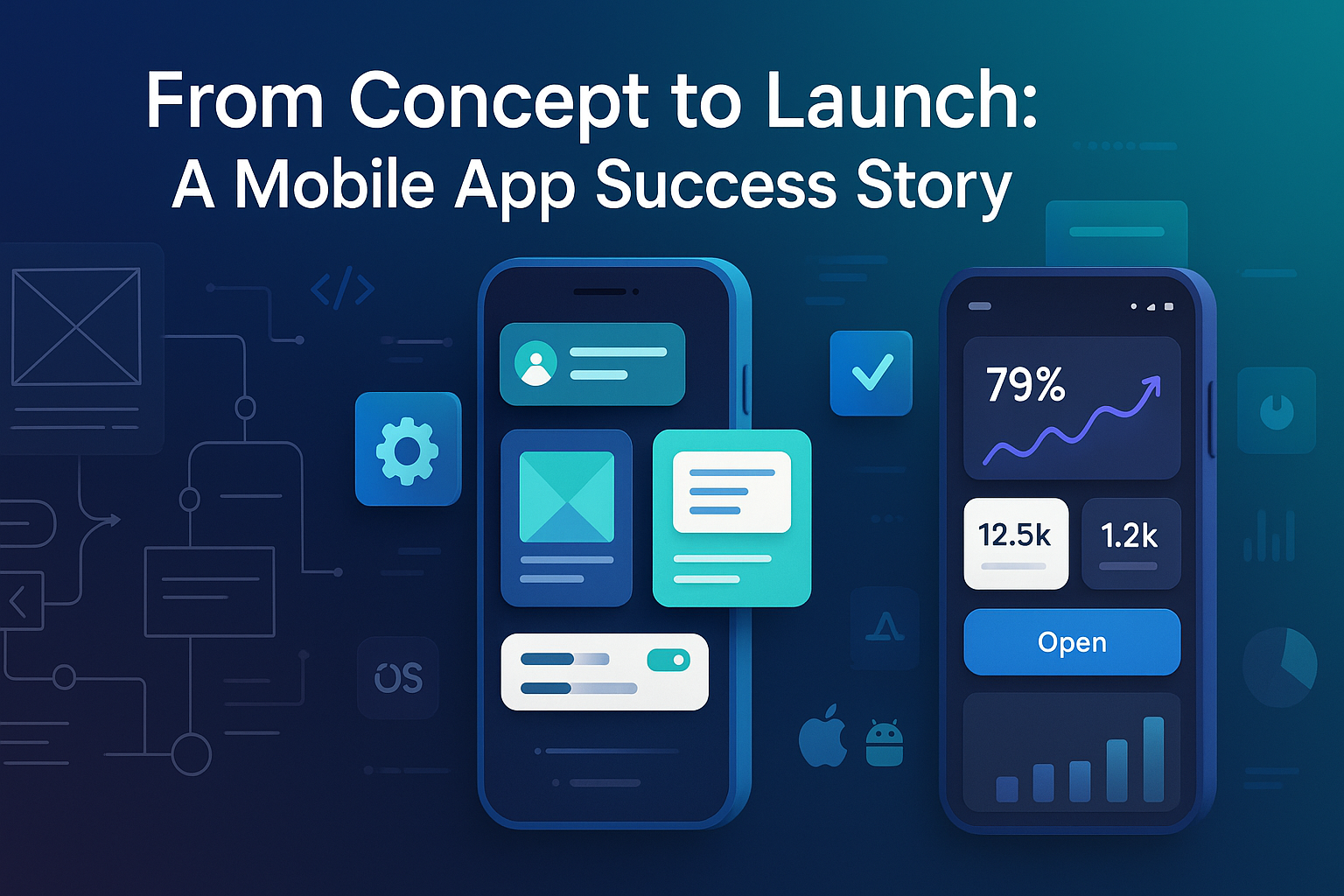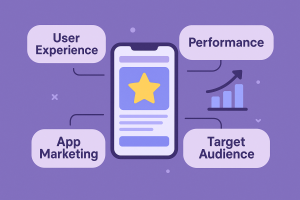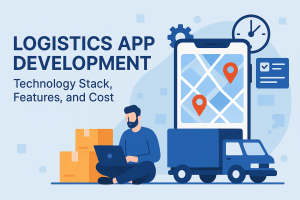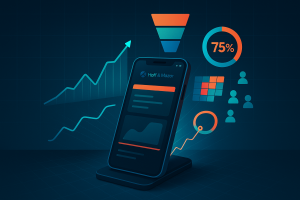Mobile applications have transformed from convenient tools to essential business assets. The journey from a simple app idea to a successful market launch is often filled with challenges, pivotal decisions, and valuable lessons. This comprehensive guide explores the entire mobile app development lifecycle, highlighting key strategies that separate successful apps from the thousands that fail to gain traction.
Whether you’re an entrepreneur with a groundbreaking concept, a business looking to expand your digital presence, or a developer seeking to refine your process, understanding the complete journey from concept to launch can significantly increase your chances of success in the competitive mobile app marketplace.
Understanding the Mobile App Market Landscape
Before diving into development, successful app creators conduct thorough market research to identify opportunities and avoid potential pitfalls. The mobile app ecosystem continues to grow exponentially, with over 3.5 million apps on Google Play and 2.2 million on Apple’s App Store competing for user attention.
This competitive landscape makes it crucial to identify your unique value proposition early. Successful apps typically solve a specific problem, fill a market gap, or provide a service in a more efficient way than existing solutions. For instance, when Uber launched, it didn’t just create another taxi service app—it revolutionized the entire transportation industry with a seamless user experience.
Research indicates that users spend approximately 90% of their mobile time in apps rather than browsers, highlighting the immense potential for businesses that can capture user engagement. However, studies also show that the average app loses 77% of its daily active users within the first three days after installation, emphasizing the importance of proper planning and execution.
Ideation and Conceptualization: The First Steps
Every successful mobile app begins with a solid concept. This initial phase involves:
Problem Identification
The most successful apps solve genuine problems for their target users. Rather than starting with a solution, begin by identifying a clear problem statement. For example, Duolingo identified that traditional language learning methods were often expensive and inaccessible, leading to the creation of their free, gamified learning platform.
Market Research and Analysis
Understanding your target audience and competition is crucial. This involves:
- Analyzing similar apps in your category
- Identifying strengths and weaknesses of competitors
- Studying user reviews and feedback of existing solutions
- Defining your target demographic
Unique Value Proposition
What makes your app different? Why would users choose it over alternatives? A clear value proposition guides everything from feature development to marketing strategies. Instagram, for instance, focused on simplicity and visual filters when most photo-sharing apps were cluttered with features.
Monetization Strategy
Consider how your app will generate revenue from the start—whether through in-app purchases, subscription models, advertising, or premium features. The most successful apps align their monetization strategy with user experience rather than against it.
Planning and Strategy Development
With a solid concept in place, the next critical phase involves comprehensive planning:
Creating a Roadmap
A detailed roadmap outlines the development journey from concept to launch and beyond. This should include:
- Project milestones and timelines
- Core feature set for MVP (Minimum Viable Product)
- Future feature additions and enhancements
- Technical requirements and dependencies
Defining Success Metrics
Establish clear KPIs (Key Performance Indicators) to measure your app’s success. These might include:
- User acquisition rates
- Retention percentages
- Session length and frequency
- Conversion rates
- Revenue targets
Resource Allocation
Determine the resources required for development, including:
- Budget allocation for development, testing, and marketing
- Team composition and skills needed
- Timeline considerations
- Technology stack selection
Choosing the Right Development Partner
One of the most crucial decisions in your app development journey is selecting the right development partner. While some organizations have in-house capabilities, many choose to work with a specialized mobile app development company that brings expertise and experience to the project.
When selecting a development partner, consider factors such as:
- Portfolio and past work in your industry
- Technical expertise in relevant platforms (iOS, Android)
- Communication processes and project management approaches
- Client testimonials and reviews
- Pricing structure and transparency
Many successful projects involve offshore mobile app development partnerships that provide cost advantages without compromising quality. These partnerships give access to global talent pools and often allow for more flexible scaling of resources as project needs evolve.
Designing for User Experience and Interface
User experience (UX) and user interface (UI) design are critical components of app success:
User-Centered Design
Successful apps prioritize user needs throughout the design process. This means:
- Creating user personas based on target demographic research
- Mapping user journeys through the application
- Identifying potential pain points and addressing them proactively
Wireframing and Prototyping
Before full development begins, creating wireframes and interactive prototypes helps visualize the app’s structure and functionality. Mobile app wireframing guide resources can provide valuable insights into this process.
Low-fidelity wireframes outline basic layout and functionality, while high-fidelity prototypes simulate the actual user experience. Tools like Figma, Sketch, and Adobe XD are commonly used for this phase.
Visual Identity and Branding
Consistency in visual elements creates a cohesive brand experience. This includes:
- Color schemes that evoke the right emotional response
- Typography that balances readability and style
- Iconography that intuitively communicates functionality
- Brand elements that create recognition and trust
Designing visually appealing apps user interface requires attention to detail and understanding of platform-specific design guidelines such as Apple’s Human Interface Guidelines or Google’s Material Design.
Accessibility Considerations
Successful apps are designed to be accessible to users of all abilities. This means incorporating features such as:
- Screen reader compatibility
- Adjustable text sizes
- Color contrast considerations
- Touch target sizing appropriate for various users
Development Phase: Building the Foundation
The development phase transforms designs and concepts into functional reality:
Choosing the Right Technology Stack
Technical decisions made at this stage have long-term implications for performance, scalability, and maintainability. Key considerations include:
- Native vs. hybrid development approaches
- Programming languages and frameworks
- Backend infrastructure and databases
- APIs and third-party integrations
Cross-platform mobile app development has gained popularity for its efficiency, allowing developers to write code once and deploy across multiple platforms.
Establishing Development Workflows
Agile methodologies are commonly employed in successful app development projects, featuring:
- Sprint planning and regular iterations
- Daily stand-ups for team collaboration
- Continuous integration and delivery practices
- Regular stakeholder reviews and feedback incorporation
Architecture and Technical Planning
A well-planned architecture ensures the app can grow and evolve:
- Scalable database design
- Modular code structure
- API design and documentation
- Security implementations and best practices
MVP Development
Many successful apps begin as a Minimum Viable Product (MVP) with core functionality before expanding. The app development process typically starts with essential features that address the primary user need, allowing for quicker market entry and validation.
Quality Assurance and Testing
Thorough testing separates professional apps from amateur attempts:
Functional Testing
Verifying that all features work as intended across supported devices and operating systems.
Performance Testing
Ensuring the app runs smoothly under various conditions:
- Load testing to simulate high user volumes
- Battery consumption analysis
- Memory usage optimization
- Response time measurements
Security Testing
With growing concerns about data privacy, security testing is non-negotiable:
- Authentication and authorization vulnerabilities
- Data encryption implementation
- Input validation and sanitization
- Compliance with regulations like GDPR, CCPA, etc.
Usability Testing
Conduct user testing for your mobile app to gather valuable feedback before launch. This involves observing real users interacting with your app and identifying areas for improvement.
Beta Testing
Releasing to a limited user group before public launch helps identify issues that internal testing might miss. Beta testers provide valuable insights from diverse perspectives and usage patterns.
Launch Strategy and App Store Optimization
A strategic launch can significantly impact an app’s initial success:
App Store Optimization (ASO)
Similar to SEO for websites, ASO improves visibility in app stores:
- Keyword research and implementation
- Compelling app title and description
- Eye-catching icon and screenshots
- Preview videos demonstrating key features
- Appropriate categorization
Launch Timing
Consider market conditions, competitor activities, and seasonal factors when determining launch timing. For example, fitness apps often see higher downloads around New Year’s resolutions, while shopping apps might target pre-holiday seasons.
Pre-launch Marketing
Building anticipation before launch through:
- Email marketing campaigns
- Social media teasers
- Press releases to tech publications
- Influencer partnerships
- Landing page with sign-up options
Distribution Strategy
Choosing the right platforms for your audience is crucial. While most apps target both Apple App Store and Google Play, some niche applications might benefit from focusing resources on a single platform initially.
Post-Launch Growth and Optimization
The journey doesn’t end with launch—successful apps require ongoing attention:
Analytics Implementation
Tracking user behavior provides insights for optimization:
- Screen flow analysis
- Feature usage statistics
- Conversion funnel monitoring
- Retention rate measurements
- Crash reporting
Marketing and User Acquisition
Sustainable growth requires ongoing marketing efforts:
- Content marketing highlighting app benefits
- Paid user acquisition campaigns
- App store featuring opportunities
- Social media community building
- Referral programs and incentives
Continuous Improvement Cycle
Using data to drive iterative improvements:
- A/B testing of features and interfaces
- Regular updates adding value
- Performance optimization
- Bug fixes and stability improvements
How to marketing a mobile app in 2024 provides strategies for maintaining momentum after the initial launch.
Scaling Infrastructure
As user numbers grow, backend systems must scale accordingly:
- Server capacity planning
- Database optimization
- Content delivery network implementation
- Caching strategies for improved performance
Case Studies: Learning from Success Stories
Uber: Revolutionizing Transportation
Uber’s journey exemplifies the power of solving a universal pain point with technology. The app began by addressing the frustration of hailing taxis, transforming into a global platform that has expanded into food delivery, freight, and more. Key success factors included:
- Frictionless payment processing
- Real-time location tracking
- Dynamic pricing model
- Two-sided marketplace connecting drivers and riders
- Continuous expansion of services
Duolingo: Gamifying Education
Duolingo transformed language learning by making it free, accessible, and enjoyable. Their success stems from:
- Gamification elements (streaks, points, leaderboards)
- Bite-sized learning sessions for daily engagement
- Data-driven lesson optimization
- Free core offering with premium subscription options
- Community-building features
Instagram: Simplicity at Scale
Instagram’s meteoric rise demonstrates the power of focus and simplicity:
- Concentrated on doing one thing exceptionally well (photo sharing)
- Created distinctive visual identity through filters
- Built cross-platform compatibility from early stages
- Strategic acquisition decisions (purchased by Facebook)
- Gradual feature expansion while maintaining core simplicity
Common Challenges and How to Overcome Them
Technical Debt
As development progresses rapidly, shortcuts taken early can create technical debt that slows future development. Successful teams:
- Allocate time specifically for code refactoring
- Maintain comprehensive documentation
- Implement code review processes
- Balance speed with sustainability
User Retention Issues
5 common mistakes to avoid in mobile app development highlights how poor onboarding experiences and performance issues can lead to abandonment. To improve retention:
- Create seamless onboarding experiences
- Implement progressive feature introduction
- Use push notifications strategically, not intrusively
- Regularly analyze drop-off points in the user journey
Scaling Challenges
As user bases grow, technical infrastructure must scale accordingly:
- Plan for horizontal scalability from architecture design
- Implement monitoring systems for early problem detection
- Consider serverless architectures for certain components
- Partner with experienced hire mobile app developer teams who understand scaling challenges
Monetization Balance
Finding the right balance between revenue generation and user experience is crucial:
- Test different pricing models with user segments
- Ensure premium features provide clear value
- Consider freemium models with generous free tiers
- Avoid interrupting core functionality with monetization elements
Future-Proofing Your Mobile App
Successful apps evolve with changing technologies and user expectations:
Embracing Emerging Technologies
Consider how technologies like AR/VR, AI, and blockchain might enhance your app experience. Blockchain in fantasy sports app shows how innovative technologies can transform existing business models.
Platform Updates and Compatibility
Apple and Google regularly update their platforms, requiring vigilance:
- Allocate resources for platform compatibility updates
- Stay informed about upcoming OS changes
- Test thoroughly with beta versions of new operating systems
- Schedule regular maintenance updates
User Feedback Loops
Establish systems for ongoing user input:
- In-app feedback mechanisms
- Regular user surveys
- Community forums or social channels
- Beta testing groups for new features
Competitive Analysis
Monitor competitor activities and industry trends:
- Subscribe to industry publications
- Regularly review competitor app updates
- Attend industry conferences and events
- Participate in developer communities
Conclusion:
The path from concept to successful mobile app launch is rarely straightforward. It requires vision, persistence, technical expertise, and adaptability. The most successful apps are those that continue evolving long after their initial release, guided by user feedback and changing market conditions.
By focusing on solving genuine problems, creating exceptional user experiences, working with experienced development partners, and maintaining a data-driven approach to growth, your mobile app has the potential to join the ranks of successful applications that have transformed industries and enhanced users’ lives.
Remember that even the most successful apps faced challenges and setbacks along their journey. What separates success from failure is often not the absence of obstacles but the persistence and creativity applied to overcoming them.
As mobile apps are a game changer for businesses, investing in quality development and continuous improvement creates lasting value. Whether you’re just beginning your mobile app journey or looking to revitalize an existing product, applying these proven strategies can significantly increase your chances of success in the competitive mobile app marketplace.







